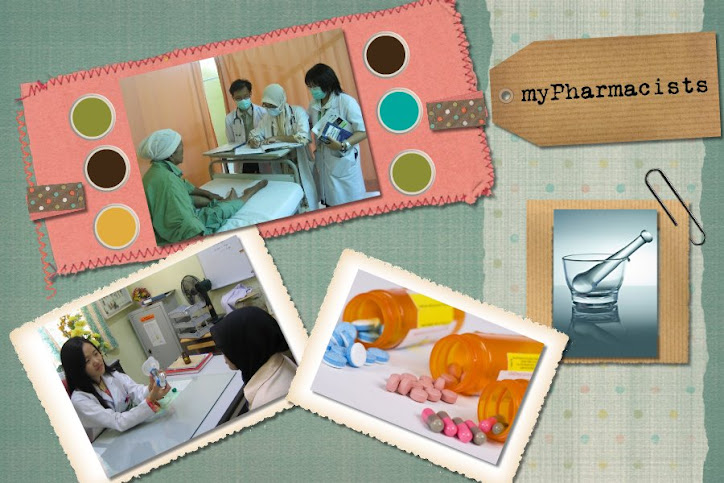
The extent of bowel involvemnt in UC
Proctitis: involvement limited to the rectum
Distal/left-sided colitis: inflammatory process extends from the rectum 40cm
Pancolitis: inflammation that affets the entire colon
1) Aminosalicylates- Sulphasalazine, 5-aminosalicyclic acid (Europe: mesalazine, USA: mesalamine)
2) Corticosteroids 3) Immunosuppresive agents
-Thiopurines: azathioprine, mercaptopurine
(primary benefit: steroid sparing effect; limitation: slow onset of action, up to 3-6 months treatment may be necessary to appreciate an optimal effect)
-Cyclosporine
-Infliximab
Sulphasalazine is cleaved by gut bacteria in the colon to sulfapyridine & mesalazine (active component). Sulfapyridine is responsible for many of the side effects of sulphasalazine-
Dose-related: GI disturbances, headache, arthralgia
Idiosyncratic reactions: toxic epidermal necrolysis, exfoliative dermatitis, hepatotoxicity
Sulfapyridine is a sulfonamide, hence it is NOT to be used in patient with allergy to sulfa drug or G6PD deficiency.
Despite the side effects of sulphasalazine, it is still used due to its much cheaper price.

Free mesalazine is a zwitter ion; when administered orally, it undergoes rapid and nearly complete systemic absorption from the proximal small intestine.
There are 2 brands of mesalazine available in Malaysia: Pentasa and Salofalk. The different delivery characteristics of Pentasa and Salofalk (as shown in the table below) mean that they are not interchangeable. Hence, prescription should be by the trade-name rather than the generic drug name. The choice of mesalazine depends on the extent/site of bowel involvement in UC.

Mesalazine suppository is most appropriate for proctitis, while mesalazine enema is suitable for more extended disease affecting the sigmoid or greater parts of the left colon.

The following algorithms are derived from Ulcerative colitis practice guidelines in adults: American college of Gastroenterology, Practice Paramameters Committee.


Antibiotics Use in UC
There have been cases whereby UC patient was given t. ciprofloxacin 500mg bd and t. metronidazole 400mg tds in the ward.
In fact, there is no evidence to support the use of antibiotics in UC.
BMJ 2006; 333 :
-Antibiotics indicated if doubt exists about the diagnosis (e.g.in the case of a first attack) or if the patient has recently travelled to an area where amoebic dysentery is endemic.
-Patients can be started on metronidazole and a quinolone empirically in this situation. Stool should be taken for culture (including assessmentof C difficile toxin) in all patients.
Gastroenterology 1998; 115(5):
-Ciprofloxacin reduced treatment failure in ulcerative colitis at 6 months but not at 12 months
-prednisone (0.75 mg/kg/day for 4 weeks then 0.5 mg/kg/day for 4 weeks then 0.25 mg/kg/day for up to 12 weeks then tapered if possible) and mesalamine (800 mg twice daily for 12 months) and ciprofloxacin (500-750 mg twice daily for 6 months)
Am J Gastroenterol 2010; 105:
In the absence of any proven infection, controlled trials of antibiotics have showed no therapeutic benefit from the use of IV metronidazole or ciprofloxacin when added to intravenous steroids.
However, protocols outlining treatment regimens for severe colitis generally include broad-spectrum antibiotics for patients with signs of toxicity, or with worsening symptoms despite maximal medical therapy.
Antidiarrhoeals Use
Antidiarrhoeals such as loperamide and diphenoxylate do not reduce stool frequency in colitis; instead, they increase the risk of toxic megacolon and are best avoided in patients with severe disease.
References
1. DiPiro JT and Schade. Inflammtory bowel disease. In Wells BG, Dipiro JT, Schwinghammer TL and Hamilton CW (editors) Pharmacotherapy. USA: The McGraw-Hills Company; 2006. p.649-662.
2. Baumgart DC and Sandborn WJ. Inflammatory bowel disease: clinical aspects and established and evolving therapies. The Lancet 2007; 369: 1641-1657.
3. John Hopkins Medicine. Ulcerative colitis (Accessed 2010 April 28th). Available from: URL:http://www.hopkins-gi.org/GDL_Disease.aspx?CurrentUDV=31&GDL_Disease_ID=2A4995B2-DFA5-4954-B770-F1F5BAFED033&GDL_DC_ID=D03119D7-57A3-4890-A717-CF1E7426C8BA
4. Collins P and Rhodes J. Ulcerative colitis: diagnosis and management. BMJ 2006; 333: 340-343.
5. Dukes GE and Duncan BS. Inflammatory bowel disease. In Yong LL, Koda-Kimble MA (editors). Applied therapyeutics-the clinical use of drugs. Pennsylvania: Lippincott Williams & Wilkins;1995. p. 24-2—24-11.
6. Sandborn WJ and Hanauer SB. Systematic review: the pharmacokinetic profiles of oral mesalazine formulations and mesalazine pro-drugs used in the management of ulcerative colitis. Aliment Pharmacol Ther 2003; 17: 29–42.
7. Forbes A and Chadwick C. Mesalazine Preparations. The Lancet 1997; 250 (9087): 1329.
8. Turunen UM, Färkkilä MA, Hakala K et al. Long-term treatment of ulcerative colitis with ciprofloxacin: a prospective, double-blind, placebo-controlled study [Abstract]. Gastroenterology 1998; 115(5): 1072-1078.
9. Kornbluth A and Sachar DB. Ulcerative colitis practice guidelines in adults: American College of Gastroenterology, Practice Parameters Committee. Am J Gastroenterol 2010; 105:501–523. Available from: URL: http://www.gi.org/physicians/guidelines/UlcerativeColitis.pdf




By the way, folic acid supplementation is VERY important when you start sulfasalazine. (Folate enzyme inhibition interaction)
ReplyDeleteAnd almost all UC patients present with some form anemia.
Either from low food intake/malnutrition/GI bleeding/no folate supplementation with sulfasalazine. (refer to full blood count, ferritin store)